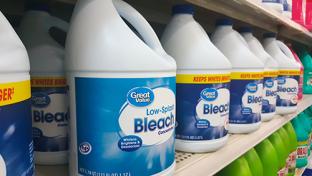Walmart Sales Surge on Food and Consumables
A huge shift in shopper behavior propelled Walmart to record second quarter sales with U.S. same store sales advancing 9.3%, driven by a near 100% increase in e-commerce sales.
Walmart U.S. total sales increased 9.5% to $93.3 billion, but it was the composition of that growth that reflects a continuation of pandemic-driven changes in shopping behaviors that began during the first quarter. Walmart reported a massive 27% increase in the size of its average ticket but said the volume of transactions declined 14%.
During the quarter ended July 31, Walmart’s network of 4,753 stores, of which 3,569 are supercenters, functioned as fulfillment centers for digital orders and drove a 97% increase in e-commerce sales. Walmart considers orders fulfilled by stores, whether for delivery or pick up, as e-commerce sales since they were initiated digitally. Grocery pickup service was available from 3,450 Walmart stores at the end of the quarter and same-day delivery was provided from 2,730 locations.
Second quarter sales started strong, both in-store and online, particularly in general merchandise, helped by government stimulus spending, according to the company. Grocery sales had another strong quarter, but as stimulus funds tapered off, the company said sales started to normalize with comps during July growing more than four percent.
Walmart said its food sales increased in the high single-digits with broad-based strength across most categories, while consumables sales were led by household chemicals and paper goods. It also noted pickup and delivery services continued to experience all-time high sales volumes.
Government stimulus spending helped the performance of general merchandise areas where sales increased and there were fewer markdowns.
Walmart’s 599 unit Sam’s Club division experienced a slightly different effect during the second quarter. Sales there increased 8.8%, but comps increased 13.3%, excluding fuel. Unlike at Walmart, the number of transactions increased 8.7% and the average transaction size also increased 4.3%.
Sam’s reported broad strength across categories, led by food and consumables, driven by strong member growth and a benefit from government stimulus and the SNAP program.
Bentonville, Ark.-based Walmart operates more than 11,300 stores under 58 banners in 27 countries, and e-commerce websites, employing 2.2 million-plus associates worldwide. Walmart U.S. is No. 1 on The PG 100, Progressive Grocer's list of the top food retailers in North America, while Walmart-owned Sam's Club ranks No. 9 on the list.







